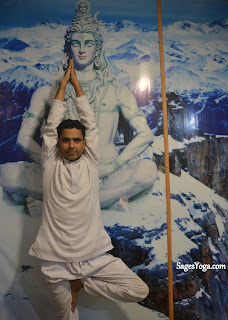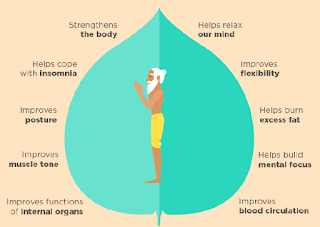Yoga History - Origin of Yoga
Yoga History - Origin of Yoga
Yoga, today, is the fastest-growing practice worldwide. But how much do we know about the origin of Yoga? Not very much, I guess. So let us just get the basic knowledge about it in this article.
Yoga is said to be originated in Indus Valley Civilization (3300-1900 BCE) and Vedic-Period (1500-500 BCE).
The word 'Yoga' is first mentioned in the Rigveda. The Rigveda, however, does not describe yoga, and there is little evidence as to what the practices were. Earliest references to practices that later became part of Yoga are made in 'Brihadaranyaka Upanishad', the earliest Hindu Upanishad. For example, the practice of 'Pranayama' (consciously regulating breath) is mentioned in hymn 1.5.23 of Brihadaranyaka Upanishad (c. 900 BCE) , and the practice of 'Pratyahara' (concentrating all of one's senses on self) is mentioned in hymn 8.15 of 'Chandogya Upanishad' (c. 800–700 BCE).
The first known appearance of the word 'Yoga', with the same meaning as the modern term, is in the 'Katha Upanishad', probably composed between the 5th and 3rd century BCE, where it is defined as the steady control of the senses, which along with cessation of mental activity, leading to a supreme state (Moksha).
The Bhagavad Gita apart from traditional paths of Yoga, gave three new principles namely Bhakti Yoga (devotion), Karma Yoga (performing all duties with righteousness) and Jnana Yoga(to achieve supreme knowledge).
Thus, there are multiple spiritual paths mentioned in Hinduism through which one can achieve 'Moksha' (liberation).
According to yogic lore Lord Shiva, is considered to be the Adiyogi or the first yogi.
Yogis believed that Shiva reached a supreme state where there was nothing but blissful neutrality towards the worldly matters. He used to dance on mountains in bliss and meditate for long durations.
People got curious, as to how a person can be so detached from the world and yet be this blissful. They wanted to experience it too; they approached him but none could convince h
People got curious, as to how a person can be so detached from the world and yet be this blissful. They wanted to experience it too; they approached him but none could convince him to teach except seven holy men (sages) referred to as 'Saptarishis' (seven sages).
Ultimately, Shiva blessed them with the knowledge of Yoga. Thus Shiva became first Guru (Adiguru).
With the aim of imparting that knowledge to common man, each one of them went to a different part of the Indian subcontinent.
Over time, various sages interpreted yoga in different ways, although the goal always remained the same, that is, Moksha/Mukti (liberation).
Yoga was quite popular earlier. But due to foreign invasions on India around 1000 CE, and foreign rule, later on, Yoga was banned. Sages, however, kept taking steps to preserve Yoga.
Yoga couldn't achieve the popularity it deserved until the late 19th and early 20th century. With efforts of likes of Swami Vivekananda who himself was an 'awakened-yogi', Yoga reached west and took a form which is called 'Modern Yoga'.
There are different forms of Yoga (Hatha Yoga, Laya Yoga, Mantra Yoga, etc); Hatha Yoga being followed most.
Hatha Yoga primarily consists of yogic postures (asanas) accompanied by Pranayama, Meditation etc. It focuses more on physical health.
Whereas, Patanjali's Yoga Sutras (appeared around 400 CE) are more inclined towards spiritual awakening with little or no focus on asanas. Sage Patanjali's Yoga Sutras is a collection of principles mentioned in different earlier yoga-scriptures and traditions.
Content source: https://sagesyoga.com/blog/yoga-history-and-origin-of-yoga.php




Comments
Post a Comment